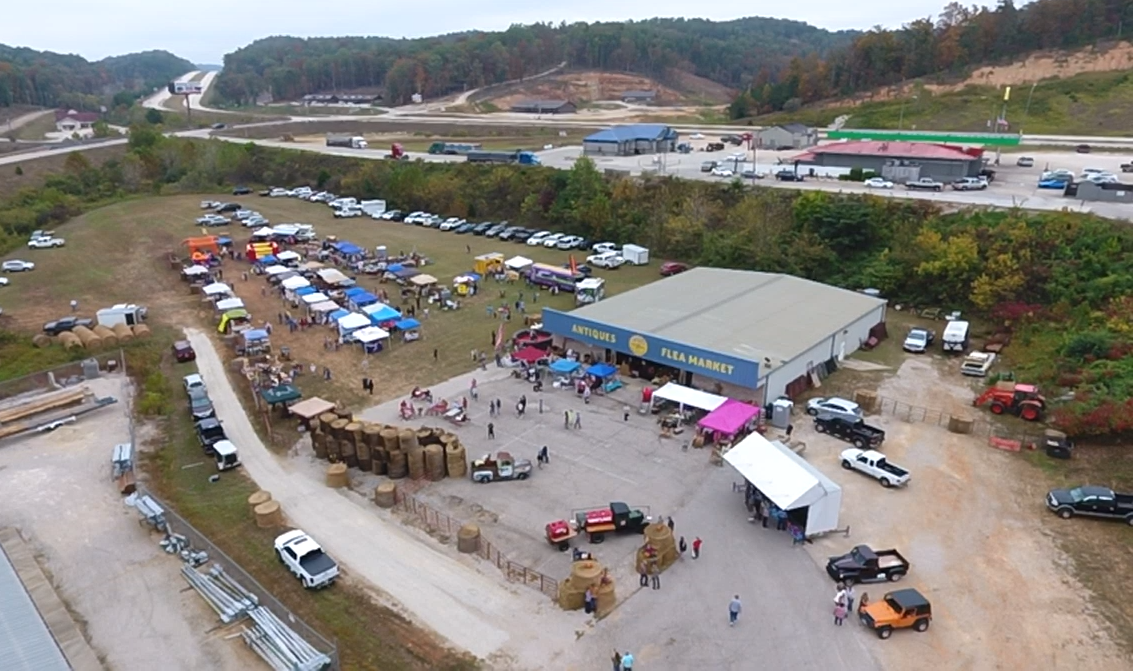A teenager had a passion for rare and heirloom seeds, and an Ozark business was born. Discover the farm and seed store you can visit, an upcoming tulip festival, two additional festivals for gardeners, and what makes these seeds special.
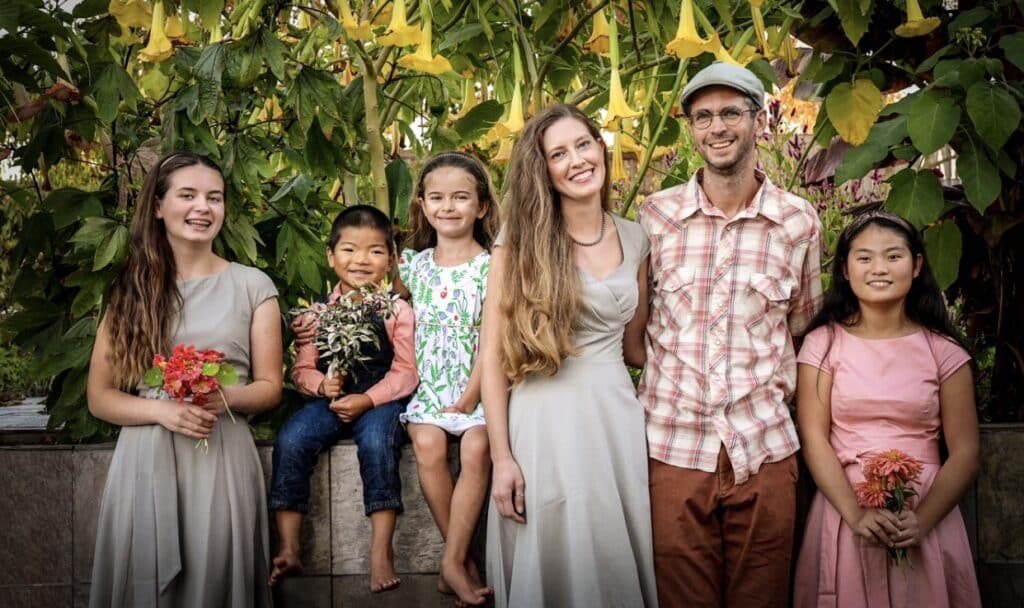
By Carolyn Tomlin
Nearly three decades ago, you wouldn’t recognize Baker Creek Farm near Mansfield. That was before Jere Gettle and his family relocated from their Montana farm to the Ozarks.
Today, much of the once vacant 176 acres are planted with dozens of varieties of seed-producing plants, both fruits and vegetables. Committed to showing others the value of eating natural, locally grown food that’s free of pesticides and preservatives, Jere teaches by example. Visitors to the farm are not surprised; after all, this is the Show-Me State.
Born in 1980 and raised in rural Montana, Jeremiath Gettle’s life was markedly different from the typical American kid during the 1980s and early 1990s. After all, Jere’s parents were modern-day homesteaders. “We lived off the land,” Jere says.
Jere credits his ancestors—farmers who worked the land in Siberia, Germany, and Mexico—for passing on this rich heritage of growing things. Almost entirely self-sufficient, the family raised nearly all of their own food, including farm animals, fruits, and vegetables. During his childhood, Jere spent much of his time in the garden.
“No, I wasn’t born there,” he says, laughing. However, when he was an infant, his mother, Debbie Gettle, did bring him in a bassinet out to the field where she and his father, Jim Gettle, picked vegetables.
Jere’s youth was not unlike another famous Missourian: Laura Ingalls Wilder, author of The Little House on the Prairie. Being home-schooled, he and his sister enjoyed a certain amount of freedom from the confinement of the classroom.
“Camping was a favorite family pastime, and I recall jumping in my dad’s 1975 Ford pickup and driving into the mountains,” he says. “There, we slept near a cliff close to the tree line and observed hawks and eagles swooping by. Summertime meant outdoor activity. Collecting bird’s nests, dodging rattlesnakes, and picking wild mushrooms in the fields filled my days.”
Even as a small boy, Jere was enchanted by the possibilities of what could be created with seeds, sunshine, and soil. Like a giant crayon box, he explored the different colors and shapes of plants. And he actually learned to read by reading seed catalogs and memorizing the exotic names he would find.
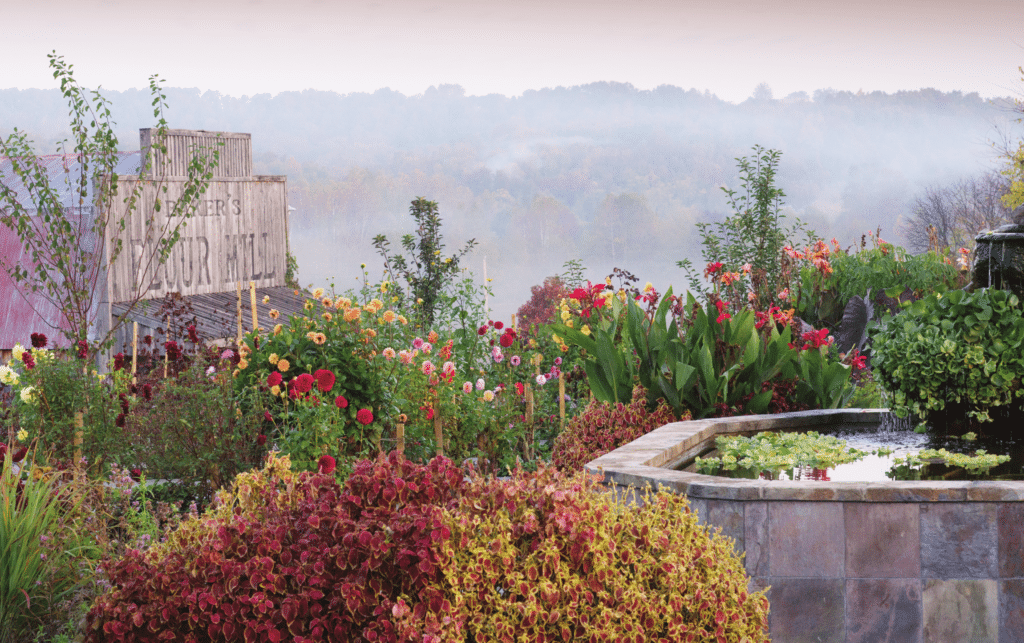
But change was coming. Searching for land that provided a longer growing season, his parents found and settled on a 176-acre Ozark farm in central Missouri, near Mansfield, known as Baker Creek. For Jere, the move was bittersweet.
“I would miss the Montana farm with our extended family,” he says, “but I was excited about those long, hot summers that allowed me to grow my dream crop—watermelons.” At twelve years old, he was already thinking like a seasoned farmer.
REALIZING A DREAM
With a growing passion to develop his own company, Jere started his own business, the Baker Creek Heirloom Seed Company in 1998.
He was seventeen years old.
“This was the year I sent out my first twelve-page catalog,” he says. “This publication offered seventy-five varieties of seeds grown on our land.”
Soon, the new-found business had hundreds of customers. Within a year, the Baker Creek Heirloom Seed Company not only occupied his bedroom, but it also overflowed into the free space in the family farmhouse. Upstairs, downstairs, even the steps were covered with boxes of seeds, price lists, postage supplies, and drying racks.
“I remember working late into the night,” he says, “filling orders, and then catching a few winks wrapped in a sleeping bag on the kitchen floor.”
Although the business was growing steadily, one event helped Baker Creek Heirloom Seed Company grow astronomically: Y2K. In the time leading up to New Year’s Eve 1999, people across the country feared that on the stroke of midnight, computers’ clocks would break down and cause a shutdown of the United States and the world. Americans started to panic at the thought of what chaos a massive computer glitch like this could cause. However, Jere saw opportunity.
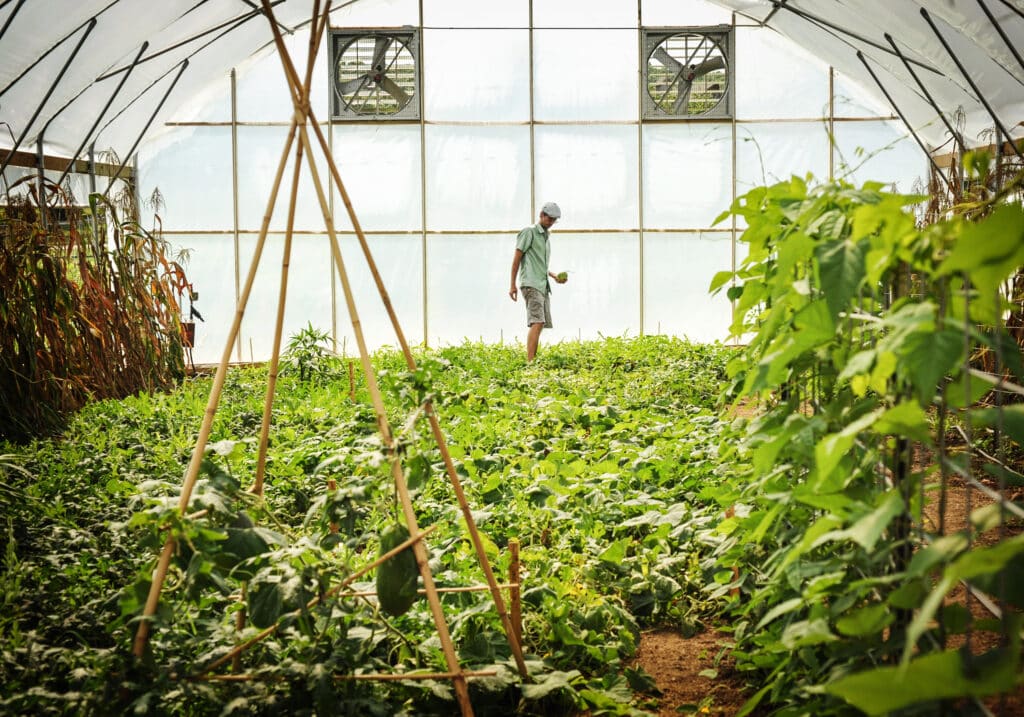
Photo Courtesy of Baker Creek Farm
That year, he loaded up two- and five-gallon buckets from a hardware store, filled them with twenty-five bags of open pollinated seeds, and marketed them as the Baker Creek Homestead Seed Package. Orders poured in. Mountain men who stored shotguns in their basements, women who wanted a food supply for their families, those who wanted emergency food, and every other panicked type in between placed orders.
“The world didn’t come to an end, though.” Jere says. “And most people don’t even remember the fear. But it changed the way Baker Creek Seeds did business. Sales increased from $1,000 in 1998 to $40,000 in 1999. This experience taught me an important lesson: to stay connected to our customers and to keep up with what is happening in the world.”
And with that success, the company began to earn wider recognition. With that acknowledgment came media attention and an unexpected connection that forever changed Jere’s life.
“A young writer by the name of Emilee Frele conducted a phone interview about a story on the seed company,” he says. “After the article was published, we stayed in touch. Meeting a couple of months later, I knew this was the woman I wanted to marry. Like me, Emilee was in the garden as a child, where the love of planting and growing was passed on to her from her grandparents.”
Emilee and Jere married, and the couple now has five children. Everyone is a part of the operation, making it a true family business. Throughout the year, the Gettles travel together to Asia, South America, and other markets to seek out heirloom seeds. Then, they return to their Missouri farm and continue the process of saving our history.
DECLINING HEIRLOOMS
The term heirloom applied to food is more commonplace than when the seed company started. In the mid-1990s, just before Jere launched the company, large seed markets introduced genetically modified crops into the country’s seed supply at unprecedented levels. Many of the great heirloom seeds were lost, but people like the Gettles became their keepers.
“I started saving seeds when I was thirteen,” Jere says. “Preserving historical varieties became my main purpose in life. I have a passion to inspire people to eat more produce, especially produce that is locally and naturally raised.”
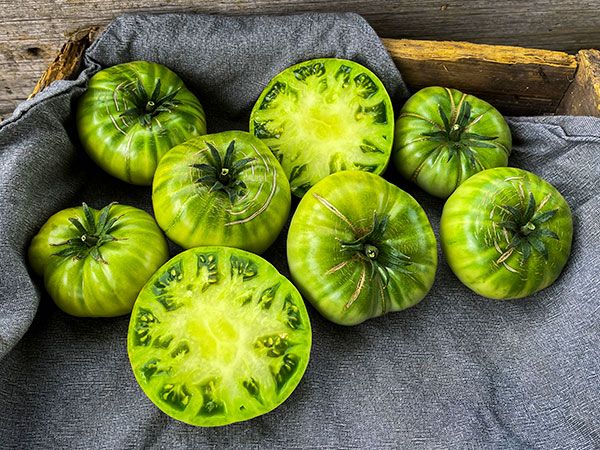
Photo Courtesy of Baker Creek Farm
Today, Jere is often called on to explain the term heirloom in the context of seeds and food. Heirloom seeds are varieties of seed that have been around for decades, if not hundreds of years, passed down from generation to generation. Heirlooms varieties are valued for any number of reasons—color, flavor, resilience—but most are noted for their idiosyncratic qualities. From white carrots and purple cauliflower to yellow watermelons and striped tomatoes, the seeds of these extraordinary plants have become the heart and soul of the Baker Creek Heirloom Seed Company.
“Our mission is to promote pure, healthy food that is free from genetic modification and toxic chemicals by educating people about natural gardening methods and historic seeds,” he says. “And the most cost-effective and enjoyable way to eat heirlooms is to plant them yourself.”
MAKING CONNECTIONS
Like any business, Jere realized advertising is essential to growing his business. It isn’t enough just to grow fruit and vegetable seeds; consumers need to know where to purchase these items. His first marketing idea was publishing a seed catalog, not unlike the ones he read as a child. His first catalog, published in 1998, was a black-and-white, twelve-page booklet with a run of five hundred copies.
The 2015 Whole Seed Catalog was like something out of Jere’s boyhood dreams. With 356 colored pages, over 1,800 heirloom varieties, and a record printing, it was a treasure of information. More than two hundred new flavorful, fragrant, and ever more distinctive varieties of seeds from around the world fill the pages, and each item is listed with its origin and a brief historical overview. However, the bountiful seed catalog is not the only thing that reels in customers.
“We live in the age of technology,” says Gettle. “Today, we sell more seeds from the websites than from mail order or telephone calls.”
Today, growers need to keep up with the latest marketing trends in fruits and vegetables faster than ever before. To keep up, the company uses quality digital photos to help sell the seeds. Although his business is all about getting back to the land, Jere needs to be just as tech-savvy as the next business owner.
VISITING THE VILLAGE
The largest, most direct way the company connects to its customers is through The Bakersville Pioneer Village. This project is centered around bringing a historic village and farm to life, in the spirit of the 1850s homesteader of the Ozark Mountains.
In 2007, with the help of some local Amish and Mennonite builders, the team at Baker Creek Heirloom Seed Company started with an old-time mercantile store on what was once a historic homestead farm, the old Rippee family farm. The project quickly expanded from there.
Next, they added an apothecary, a native stone oven, a new music barn, a historic jail, a brick herb garden, and an heirloom poultry house. Today, the village also includes a seed museum, blacksmith shop, historic livestock barns, a bakery, a hatchery, new gardens, a vegan restaurant, and more. The best part is that visiting the village is free, although parking costs $15 per vehicle only during festivals. (See details on the three festivals below.)
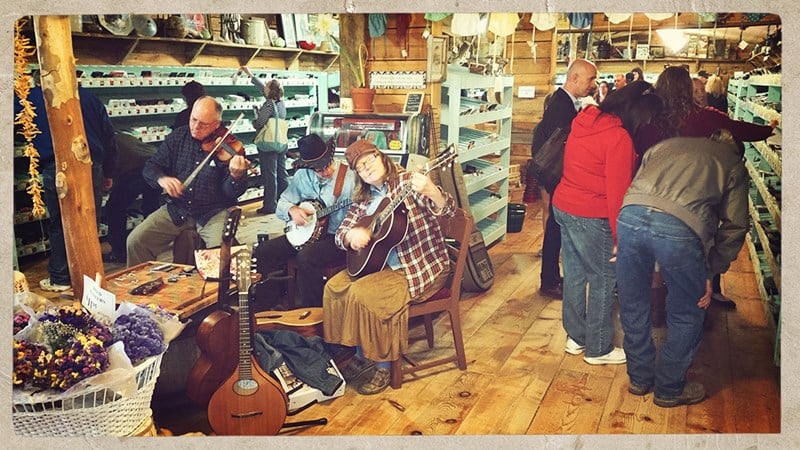
These fun-filled events celebrate each season with produce, music, crafts, and speakers that cover gardening topics such as gardening history, saving seeds, growing fruit and vegetables, cooking, hand pollinating, marketing, pest control, and much more about many heirloom and organic crops.
These celebrations also bring in crowds that want to hear live music, whether they’re fans of country, folk, bluegrass, or western. And it’s not just locals; people from many states make their way to the pioneer village for annual garden shows and festival days, which adds some excitement to Wright County, population 18,473, according to the US Census Bureau. Festival-goers stop in and shop at the area’s restaurants, convenience stores, and markets. And gas stations in the area sell ice, and lots of it.
Emilee has also opened a boutique in the village in the renovated livery barn that features clothing, teas, coffee, and home goods. It features products in her Home Folk and Bulk Herb Store online.
Today, the farm packs and ships seeds from a 105,000-square-foot warehouse in Seymour, and they also have greenhouses for growing plants there, too.
Like Thomas Jefferson and his gardens at Monticello, Jere and Emilee Gettle are making a difference in the health and history of America, but especially in southwest Missouri. And they’re doing it by teaching and saving one seed at a time.
To learn more, visit Baker Creek Heirloom Seed Co. at 2278 Baker Creek road, Mansfield, MO, or the farm’s website.
This story originally ran in the April 2015 issue of Missouri Life, but was updated in March 2023.
2023 EVENTS
Tulip Festival
April 9 and 10, 2023, Mansfield, MO
Spring Planting Festival
Fall Harvest Festival
October 8 and 9, 2023, Mansfield, MO
The National Heirloom Exposition
September 12-14, 2023, Ventura, CA
Originally conceived as a way to create awareness on issues surrounding “pure food,” the Expo is now in its 10th year and continues to grow immensely. Join 20,000 gardeners, farmers, and chefs from across the globe!
VISIT MANSFIELD
LAURA INGALLS WILDER HISTORIC HOME AND MUSEUM
3068 Route A, Mansfield, Mo.
MANSFIELD MISSOURI HISTORICAL MUSEUM
111 W. Park Square, Mansfield, Mo.
CARL MAYS EXHIBIT (within the Mansfield Missouri Historical Museum)
Related Posts
Getaway to an Ozark concert and festival
Missouri Life encourages you to come and enjoy the fantastic Ozarks at Van Buren at a fall festival and concert on October 8-9.
Inaugural Missouri Book Festival brings stories to life!
The Missouri Book Festival takes place Aug. 25-27 in Washington, Mo, and will be filled with activities for all ages.
Life Outside Festival
Mark your calendars for the Life Outside Festival held September 21, 2019 in St. Vincent County Park in St. Louis County.

